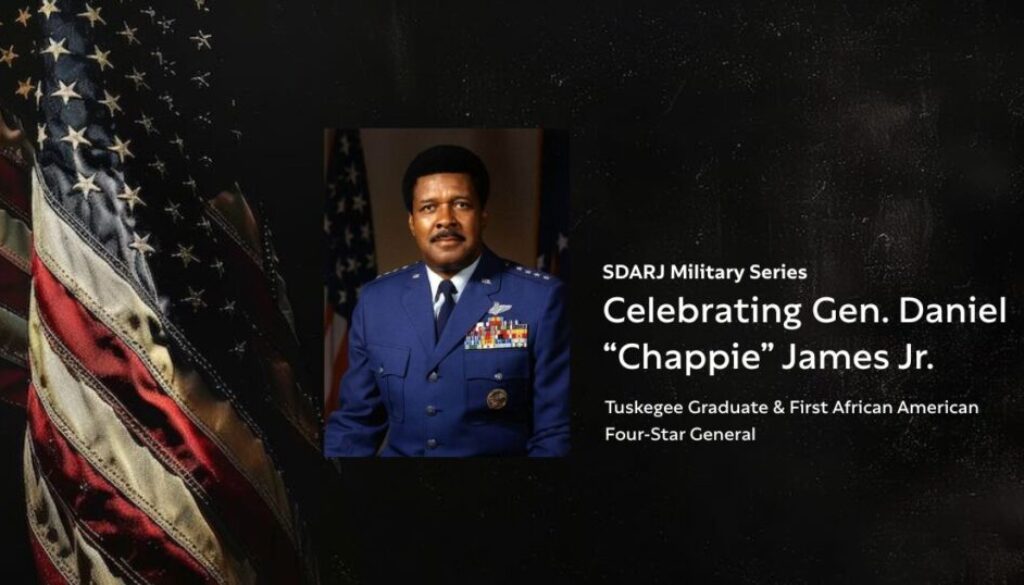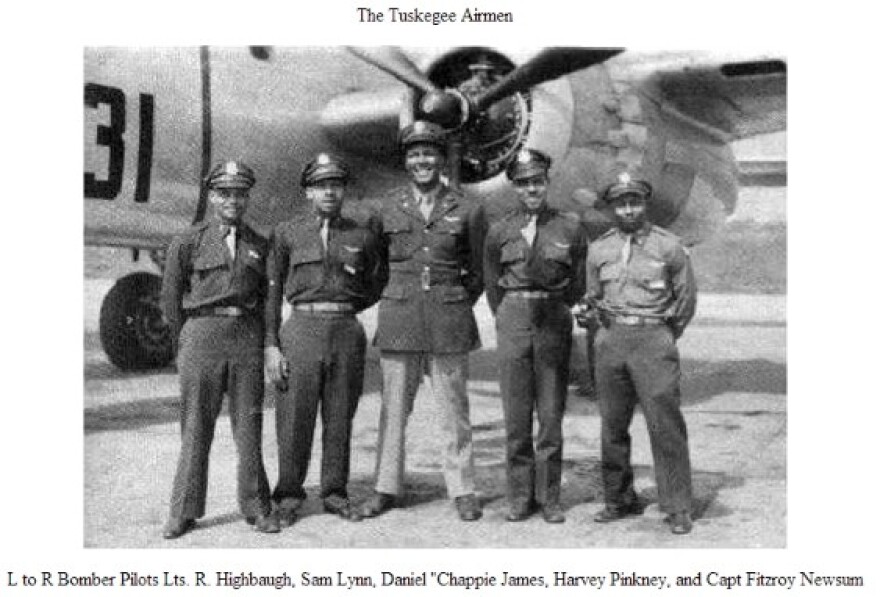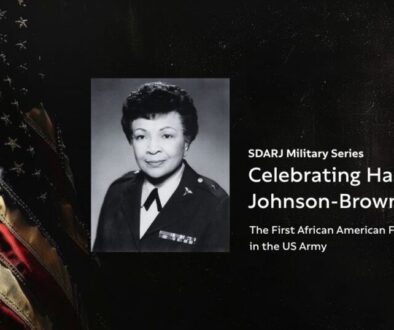Military Series – Gen. Daniel “Chappie” James Jr.

Black service members have played invaluable roles in the U.S. military since the American Revolutionary War and today, continue to serve honorably and bravely in all branches of the Armed Forces.
Gen. Daniel “Chappie” James Jr. Tuskegee Graduate & First African American Four-Star General

Gen. Daniel “Chappie” James Jr.
Daniel “Chappie” James Jr. (February 11, 1920 – February 25, 1978) was a fighter pilot in the United States Air Force who, in 1975, became the first African American to reach the rank of four-star general in the United States Armed Forces. Three years later, James was forced to retire prematurely due to heart issues, just weeks before he died of a heart attack.
James attended the famous Tuskegee Institute and instructed African American pilots during World War II. He flew combat missions during the Korean War and Vietnam War, and received the Defense Distinguished Service Medal, two Air Force Distinguished Service Medals, two Legions of Merit, three Distinguished Flying Crosses, a Meritorious Service Medal, and fourteen Air Medals.
Tuskegee Airman, General Daniel "Chappie" James Jr. | Full Interview
Daniel James Jr. was the youngest of 17 children born to Lillie (Brown) and Daniel James Sr.
It was at an early age that he got the nickname “Chappie,” inheriting it from his older brother Charles.
“Charles James went ahead of dad in football and all of that stuff, and when dad showed up, that crowd started calling dad, ‘Little Chappie,’” said James’ youngest son, Claude. But, things changed when his dad grew to 6-feet-4-inches and began to develop his own reputation.
“So, it was just “Chappie” James from then on; Daniel James Jr., but it was “Chappie” that was the nickname.”
“Chappie had wanted to be a pilot from the time he was a little kid,” said retired Air Force Colonel Roosevelt Lewis, a fellow aviator and Tuskegee graduate. “When he would look up in the skies over Pensacola, he would see the airplanes and that’s what he wanted to do. He wanted wings of Gold.”
Lewis says it was at Tuskegee that his friend and mentor learned to fly, and at the age of 19 became an instructor pilot for the nation’s first African-American military pilots.
“He taught many of the airmen over the years who went on to become household names as Tuskegee Airmen,” Lewis added.
Eventually, Chappie James would join the group. At the height of his illustrious career, years later, he would reflect on those early days.
“It was in 1943 that I completed flight training at Tuskegee Institute, Alabama,” said Gen. James in what appears to be an old Department of Defense video. “We’ve come a long way since then. In the early days at Tuskegee, in addition to the already difficult job of flying, we trained under the additional pressures of segregation. But, we had no time for self-pity or despair. We were too busy preparing ourselves for a career of service to our nation.”
Chappie’s exploits as a fighter pilot became legendary. During the Korean War, he flew over 100 combat missions. He tallied 78 more in Vietnam, most notably “Operation Bolo” MiG Sweep, which resulted in the highest total kill of any mission during the Vietnam War.
Claude recalls how his dad, Robin Olds, and company, used a bit of deception, by flying patterns familiar to the older, less agile F-105 Thunderchief, when they were really flying the new top-of-the line F-4 Phantom.
“They mocked it to the point where the enemy didn’t know,” said Claude James of the successful tactical strategy. “The enemy comes up out of the clouds and they shot down at least 7; my big brother (Daniel III) told me it was more like 11 or 12 of the best planes the North Vietnamese had in one attack, one mission.”






